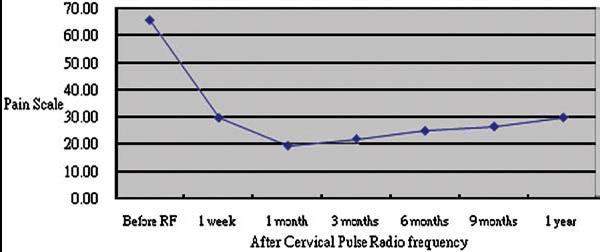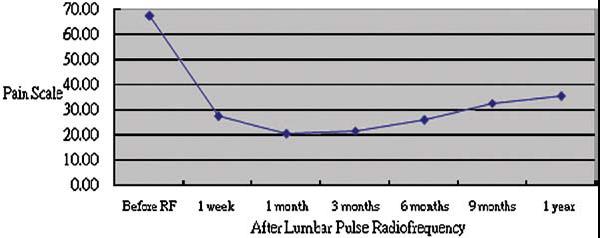Traditional treatments for referred nerve pain of neck and back have been inadequate. As mentioned previously, opioids and other pain modifying medications work poorly in radiculitis, leading to an American summation that there is no proved drug treatment for radiculopathy. Now, a simple, non-destructive pulsed radiofrequency could give relief for 6 months.
Surg Neurol. 2008 Jul;70(1):59-65.
Percutaneous pulsed radiofrequency in the treatment of cervical and lumbar radicular pain.
Chao SC, Lee HT, Kao TH, Yang MY, Tsuei YS, Shen CC, Tsou HK
This is regarding the LIMB pain in back and neck disorders. Present treatments include (besides physio techniques to spine):
1) Epidural steroid injections have been used and its ability to reduce need for sugery is conflicting. One MORON study showed only short term effects:
Carette S, Leclaire R, Marcoux S, et al. Epidural corticosteroid injections for sciatica due to herniated nucleus pulposus. N Engl J Med 1997;336:1634-40.
And no wonder – they used Depo-medrol, an agent with known irritation/ arachnoiditis (scar producing) problems and although this treatment would “pretend” to help for a while, could make things worse by scarring things up.
link here
No one uses that agent anymore. When I did epidural injections, I would use Kenalog and let the active ingredient settle and draw off the supernatant. This would minimize any reactions tenfold.
2) Etanercept injections – can work for several months but not as well in cases of bony foraminal stenosis. Etanercept by local injection, and infliximab IV have been found to nicely rescue steroid epidural failures. This is probably why initial pilot study of Enbrel was so successful – many were steroid epidural pre-treated.
Rapid Resolution of Chronic Sciatica With Intravenous Infliximab After Failed Epidural Steroid Injections.
Spine. 29(12):E248-E250, June 15, 2004.
Atcheson, Steven G. MD; Dymeck, Terri MS, APN-C
Gave 300 mg (3.35 mg/kg) infliximab (Remicade) with rapid relief of symptoms
Etanercept better researched and subject of a separate blog note.
3) Transforaminal steroids (Injected in the hole where the segmental nerve comes out) can rescue 70% of cases from surgery. However, the serious complications especially with neck injections, makes availabilitity limited and I do not know of anyone who will do then here.
4) Intramuscular stimulation (Dr. C. Gunn’s IMS)- needling the facet levels and any distal triggers can cause significant relief of pain but may not be lasting if significantly active disease.
This leaves a proportion of patients in pain with no reasonable treatment. Pulsed radiofrequency offers and option.
“With fluoroscopic guidance using C-arm, a 10-cm 22-gauge curved-tip cannula with a 1-cm active tip electrode was placed adjacent to the dorsal root ganglion within the intervertebral foramen.” [one advances until paresthesias (numbness-like feelings) are obtained by an electrical stimulator]. “Then, 2-Hz pulsed radiofrequency waves were applied for 120 seconds at 45 V, with the end point being an electrode tip temperature not exceeding 42°C.” This is not neurodestructive so can be used even in cases of neuropathic pain. Unlike traditional radiofrequency, the absence of neurodestruction means there is no multifidi muscle denervation/atrophy at level treated which could cause segmental instability.
It is thought to effect the more sensitive C pain fibers and “reset” the dorsal root gangion to a new level.
Results:
“Twenty-six of 49 patients (53.06%) and 59 (50.86%) of 116 patients after cervical and lumbar pulsed radiofrequency stimulation, respectively, had an initial improvement of 50% or more in the first week of follow-up. Twenty-seven (55.10%) of 49 patients and 52 (44.83%) of 116 patients after cervical and lumbar pulsed radiofrequency stimulation, respectively, had pain relief of 50% or more at the follow-up period of 3 months. After 1 year of follow-up, 4 (57.14%) in 7 patients and 10 (23.26%) in 43 patients after cervical and lumbar pulsed radiofrequency stimulation, respectively, had the pain relief effect of 50% or more. ”


Comment – looks good to me. But question is – who’s doing it? It was not touched on at the Canadian Pain Society meeting in May 2008 in Victoria which suggests it is not readily accepted here. There was a company, Baylis Medical, that was selling a pulse generator (one of many functions) but they seemed surprized when approached about it. Here is their video on it, advertized at the CPS meeting: Here
They may know who is doing it…
addendum:
May not work for failed backs:
Pulsed Radiofrequency in Lumbar Radicular Pain: Clinical Effects in Various Etiological Groups.
Pain Practice. 7(1):21-26, March 2007.
Abejon, David MD, FIPP *; Garcia-del-Valle, Santiago MD +; Fuentes, Maria Lorenza MD ++; Gomez-Arnau, Juan Ignacio MD, PhD +; Reig, Enrique MD, PhD, FIPP [S]; van Zundert, Jan MD, PhD, FIPP abstract
